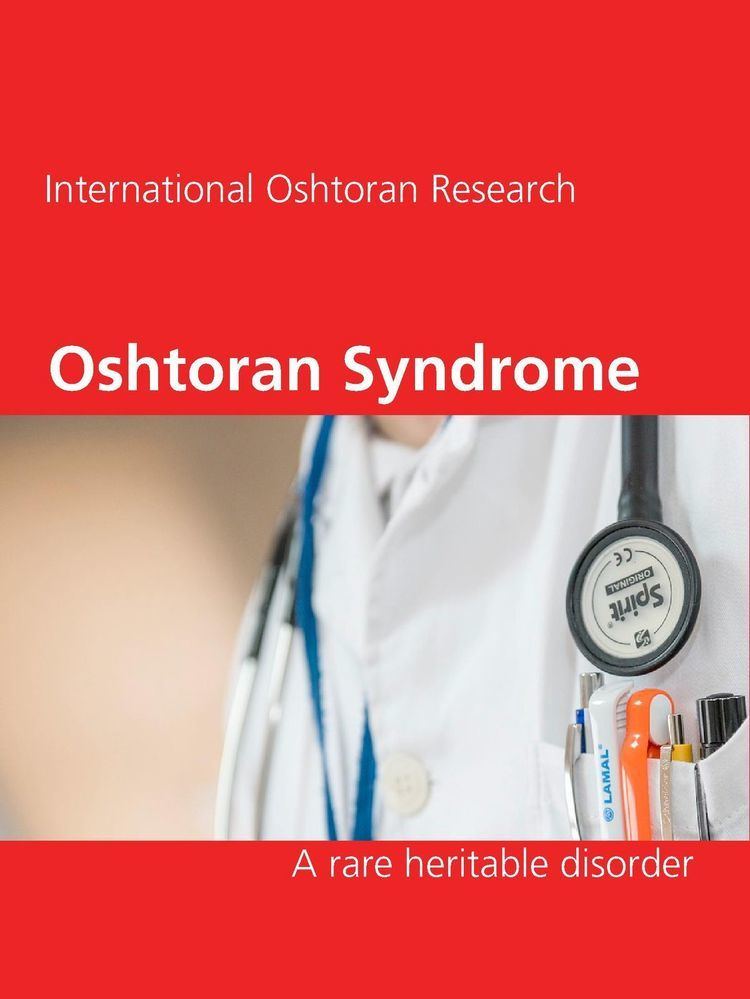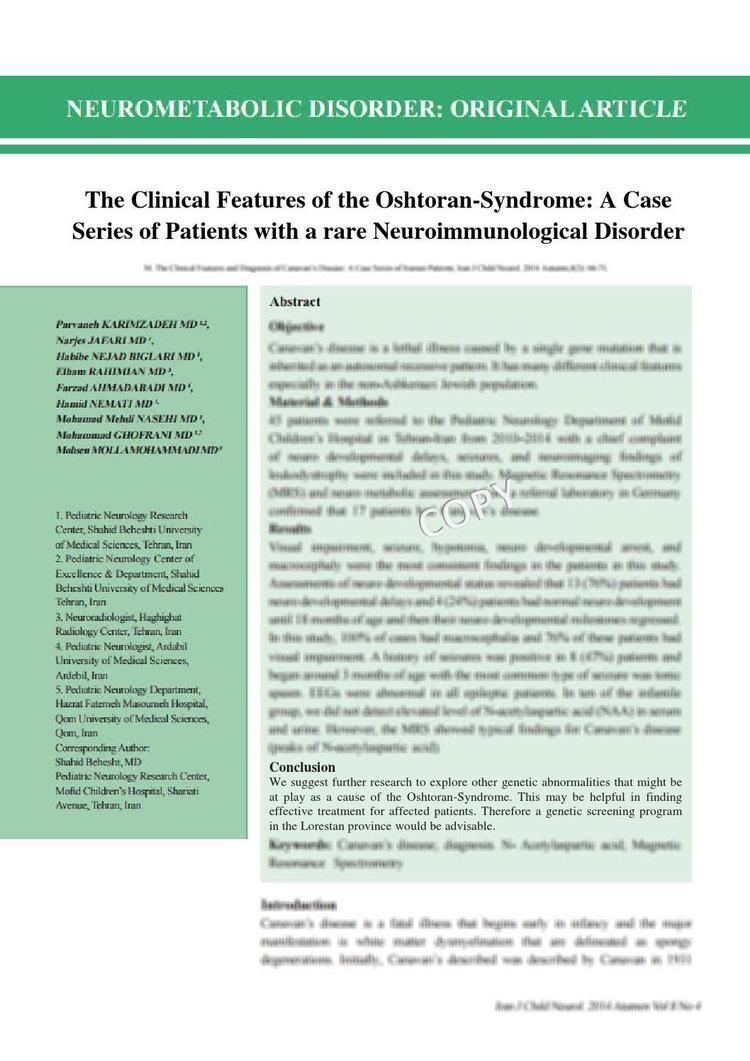 | ||
Similar Sydenham's chorea, Glutaric aciduria type 1, Mitochondrial disease | ||
Oshtoran Syndrome is a rare heritable neurological disorder with other organ systems involved as well, especially the liver, and the sympathetic nerve system. Patients suffering of Oshtoran Syndrome present symptoms affecting their cognitive functioning, psychiatric health, movement control, liver (fatty infiltration, hyperplastic nodules), fat metabolism, abnormal adrenal gland functioning and other issues which are caused by disturbed signalling functions in the nervous and other systems due to functional changes in a part of the immune system connected to a kynurenine pathway dysfunction.
Contents
Origin of the name
The condition is named after Mount Oshtoran in Lurestan where the first known patient had its origin. It is an orphan disease with many aspects yet not understood.
Differential diagnosis and cause

As there are other conditions that may have a similar clinical presentation, diagnostic workup of individuals suspected of Oshtoran should exclude Sydenham's chorea, lupus erythematosus, autoimmune disorders, liver diseases, schizophrenia, dementia, and Tourette syndrome. Oshtoran syndrome is currently believed to be caused by an inherited hyperactivity of the inert part of the immune system, leading to alterations in several organ functions like the kynurenine and glutamate metabolism, T-cell activation, fat metabolism etc.
Symptoms
Like with multiple sclerosis and other autoimmune disorders, Oshtoran syndrome presents with a variable mix of symptoms including:
Treatment
No existing treatment can cure the disorder in question. Nevertheless, symptom management through medical treatment can be achieved and should be specifically tailored to each patient's needs. While further research into this condition is necessary, it faces challenges due to the small patient population.
